High-pivot mountain bikes have enjoyed a resurgence in recent years, with big-ticket launches from brands including Forbidden, Cannondale, GT, Deviate, Devinci and Norco all adopting an idler and coming with claims of improved suspension performance.
A high-pivot suspension design raises the bike’s main pivot well above the top of the chainring and rear wheel axle, with an idler then used to reduce chain growth and pedal kickback.
In turn, by creating a more rearward axle path as the suspension compresses, high-pivot mountain bikes are said to offer plush-feeling suspension with impressive grip on rough terrain and technical descents.
Are high-pivot bikes deserving of the hype? Let's delve into the origin of high-pivot suspension, how it works, the pros and cons, and whether a high-pivot bike is right for you.
A short history lesson
Mountain bikes have developed exponentially since their inception. These changes, from the advent of 1x drivetrains and shifts in wheel size, to progressive geometry and emerging sub-genres such as downcountry, have accelerated in the last decade or so.
Manufacturers have also experimented continually with mountain bike suspension designs to improve performance and overall ride quality.
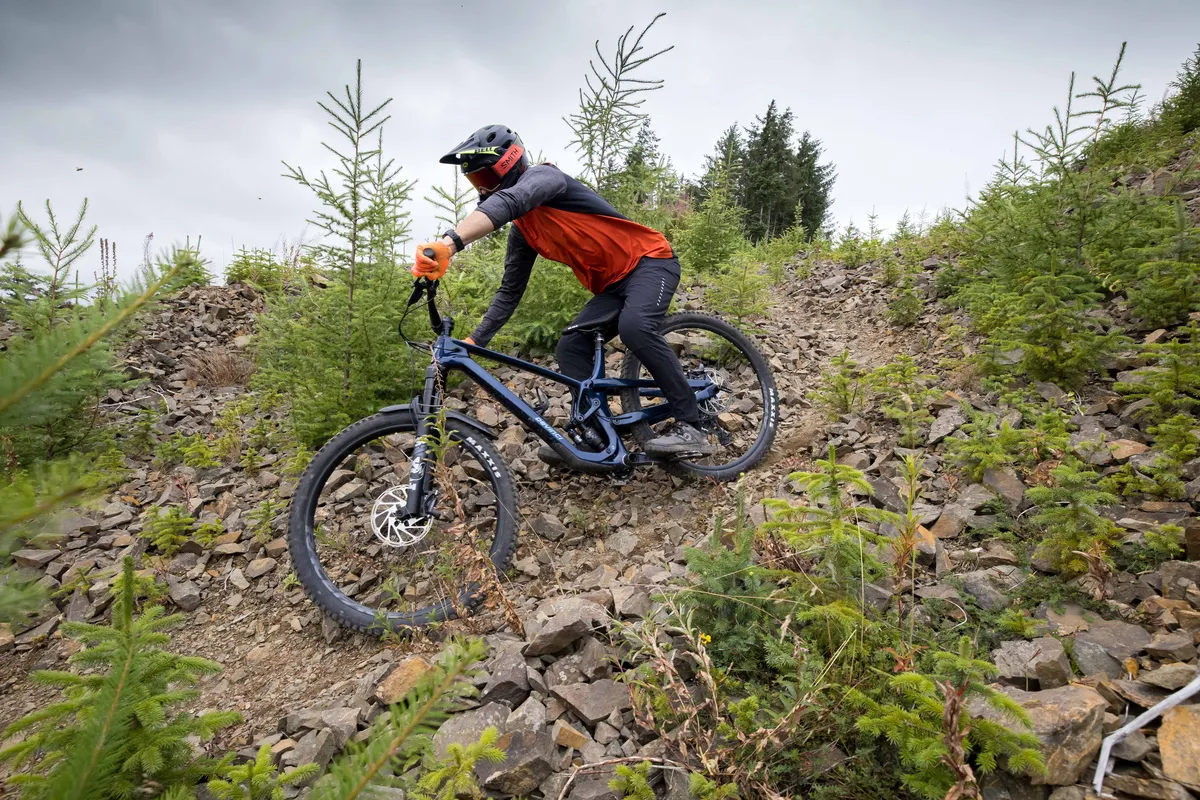
By and large, conventional suspension types include single-pivot, twin-link and Horst-link designs, and many bicycle brands then have their own take on the recipe, such as Santa Cruz’s VPP or Yeti’s Switch Infinity and Sixfinity systems.
High-pivot designs originally rose to prominence on downhill bikes in the early-2000s, with iconic models from Balfa and Brooklyn Machine Works cementing the system’s importance. Trek was then among the brands to take the high pivot into the mainstream with the launch of the 2006 Session.
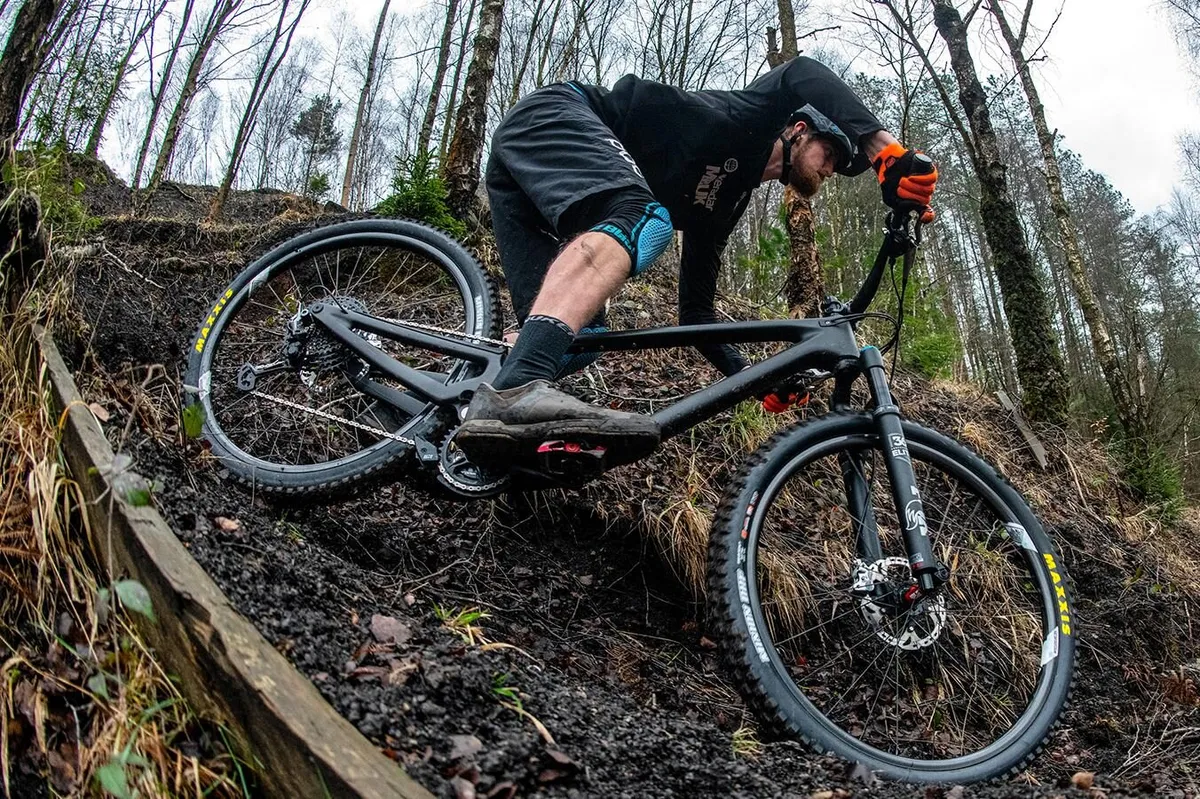
In truth, high-pivot never went away, but while the system was, and still is, used primarily on downhill bikes, a number of brands are starting to introduce high-pivot designs on their shorter-travel all-mountain and enduro bikes, including the Norco Range, Cannondale Jekyll and GT Force.
The resurgence can be attributed partly to the adoption of 1x drivetrains, which started with the introduction of SRAM XX1 in 2012. Manufacturers now don’t have to take the front derailleur into consideration with the pivot design and layout.
However, don't overlook the desire of brands to continually develop and iterate. We’re at a point in time when almost all other aspects of mountain bike design are finely tuned, so brands are looking for the next talking point or ‘marginal gain’.
If you're in the market for a new trail, all-mountain, enduro or downhill mountain bike, high pivot is now a viable consideration.
What is a high-pivot mountain bike?

All full-suspension mountain bikes feature some permutation of pivot or linkage that connects the front and rear triangles together (before we get any further, you can read our complete guide to rear-suspension designs for more).
The pivot or linkage enables the rear triangle (also known as a swingarm) to rotate around this pivot point, compressing the shock as it cycles through its suspension travel.
Because the rear wheel is attached to the swingarm, when the suspension compresses it enables the wheel to move in a predetermined trajectory, known as its axle path. This wheel movement is how the bike absorbs bumps and shocks, providing grip and making the ride smoother.
Pivot-placement location – whether that's low, mid or high, or if the bike uses a multi-link suspension design – dictates the axle path of the rear wheel.
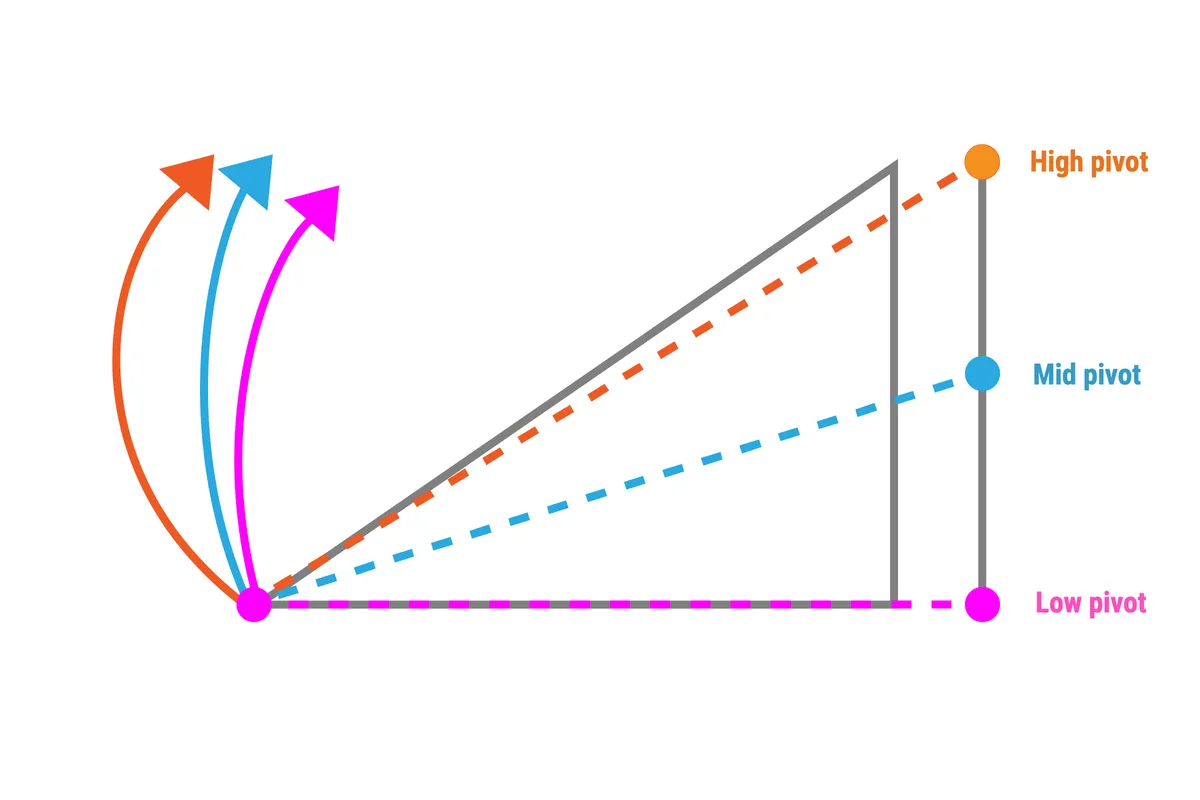
The bike’s main pivot (or 'instant centre' on virtual pivot-point, twin-link, four-bar or six-bar suspension designs) must be placed much higher than the bike’s rear wheel axle in order for the axle path to be rearward; the higher the pivot, the more rearward the axle moves.
If it is too close to or lower than the wheel’s axle, the bike’s axle path will be vertical or forwards.
In simple terms, a high-pivot mountain bike’s pivot is moved further upwards, significantly above the top of the chainring. This creates a more rearward axle path as the suspension compresses.
The images below show the exaggerated rear wheel axle paths of low-pivot, mid-pivot and high-pivot suspension designs.
Low-pivot suspension design – exaggerated axle path

Mid-pivot suspension design – exaggerated axle path

High-pivot suspension design – exaggerated axle path
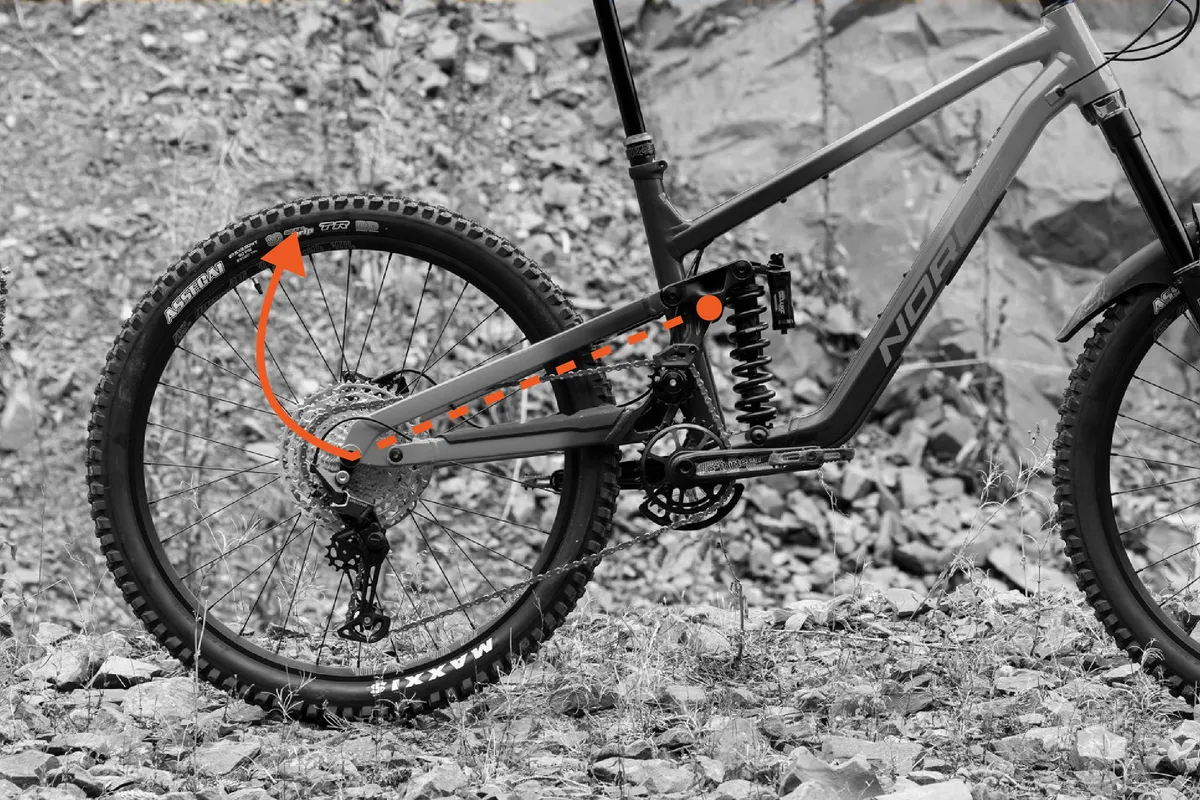
As a high pivot’s rear suspension compresses and the wheel moves up and rearward along its arcing path, the bike’s effective chainstay length (the distance between the centre of the bottom bracket and centre of the rear wheel’s axle) grows.
This, in turn, results in both upper and lower chainline growth – the lengthening of the distance between the centre of the rear wheel axle and the bottom bracket.
Lower growth is compensated by the rear derailleur cage moving forward when the suspension is compressed.
Upper chainline growth, on the other hand, causes pedal kickback. Because the cassette and chainring move away from each other when the rear wheel is moving backwards, the cranks are ‘pulled’ back as the suspension compresses.
Although pedal kickback can be disconcerting for some riders on the trail, others like the feeling because it can be used to generate speed through pumping. That said, it depends on exactly how much pedal kickback is produced and this is where the idler comes in.
Introducing the idler pulley…
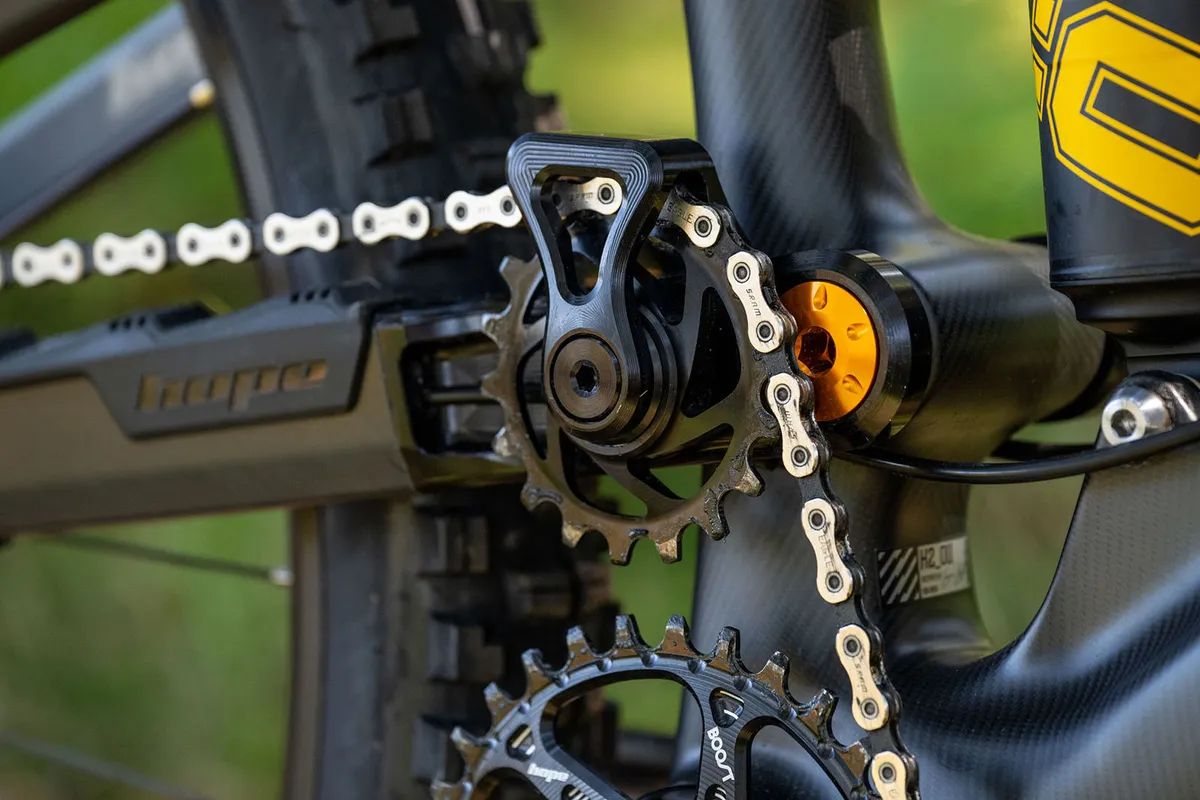
If a traditional drivetrain setup were used, pedal kickback and pedal bob, where the bike’s suspension dips in and out of its travel as a rider pedals, would be a significant problem on high-pivot bikes.
Manufacturers get round this issue by utilising an idler pulley – or wheel – that routes the bike’s chain near or concentric to the main high-pivot location. This looks very different from a conventional system.
Placed correctly, the idler should reduce the chain growth and pedal kickback that would otherwise result from the high-pivot design.
What are the benefits of a high-pivot mountain bike?
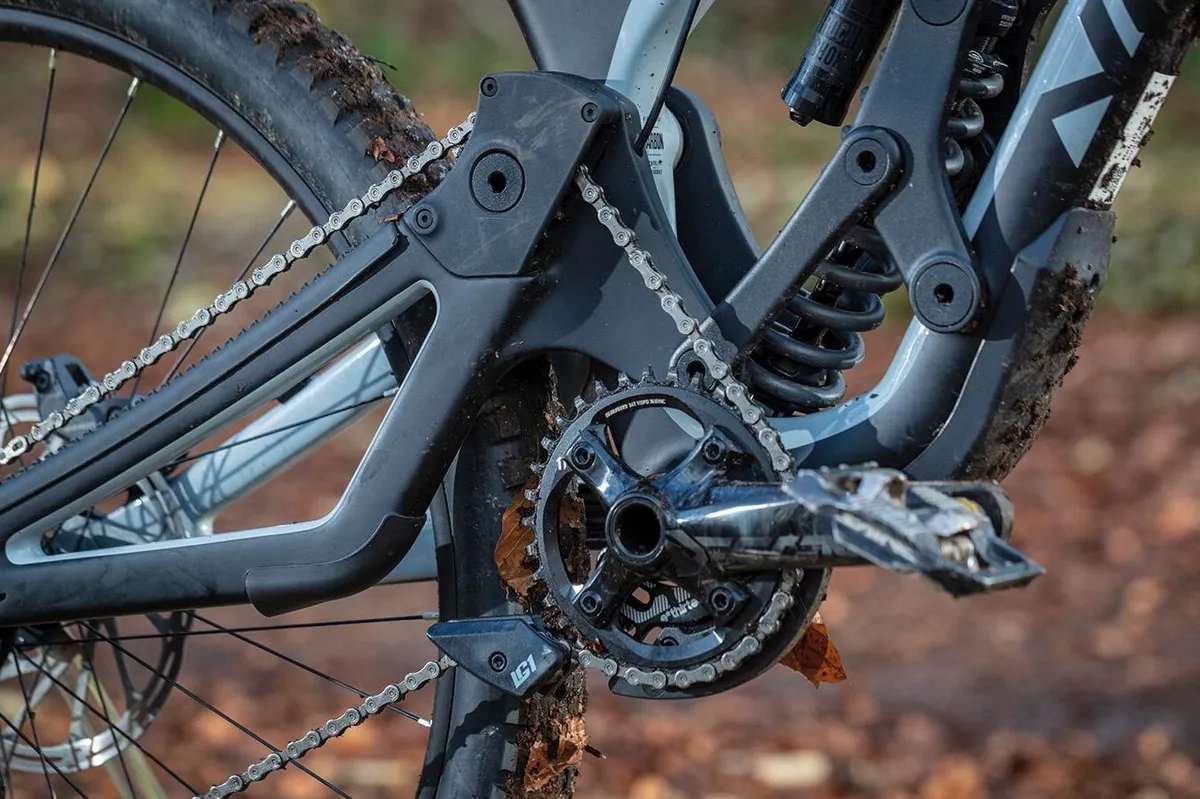
High-pivot mountain bikes have a number of purported benefits, particularly when it comes to more aggressive riding.
Improved suspension control

As we've already covered, the main benefit of a high-pivot system is the more rearward axle path as the suspension compresses. This translates into a smoother, grip-abundant and planted feel on descents and climbs.
In terms of trail feel, the more rearward axle path, combined with the idler pulley, results in increased stability and control.
High-pivot suspension systems feel supple and are able to soak up rough terrain with greater precision and ease. This makes the bike easier to ride faster because its suspension is working harder to iron out bumps, reducing how much work a rider needs to do.
Chris Deverson, Deviate Cycles co-owner and lead engineer says, "Upon impact, having the rear wheel move slightly rearwards allows the rear wheel to take a smoother path over obstacles – maintaining the bike’s forward momentum."
Generally, high-pivot bikes are also more forgiving. If a rider gets off-line or makes a mistake, the active and absorbing suspension compensates for the error, helping maintain control and speed.
Pedal kickback and anti-squat can be tuned

From a technical perspective, pedal kickback can be tuned, along with the bike’s anti-squat (how much the suspension resists pedals bob), by the placement of the idler wheel, chainring and pivot.
Depending on how the bike is designed, the way it rides can be altered significantly, and the chainring size can also be changed without affecting either the anti-squat or pedal kickback.
All of these benefits ultimately suggest a greater suitability towards longer-travel genres such as trail and, in particular, enduro and downhill, where supple and active suspension will be of most benefit.
What are the disadvantages of a high-pivot mountain bike?
So far, so good, but there are, as you'd expect, some disadvantages to consider.
Increased maintenance

Most high-pivot setups will need a longer chain due to the extended routing required, and therefore are a more spendy outlay when it comes to replacement.
Sticking with the theme of maintenance, the idler pulley is another component that will wear through use, and you’ll need to factor in replacing that, too.
An idler may also be harder to source because they're often brand-specific, unlike more commonplace chains, cassettes and chainrings.
More noise, drag and weight
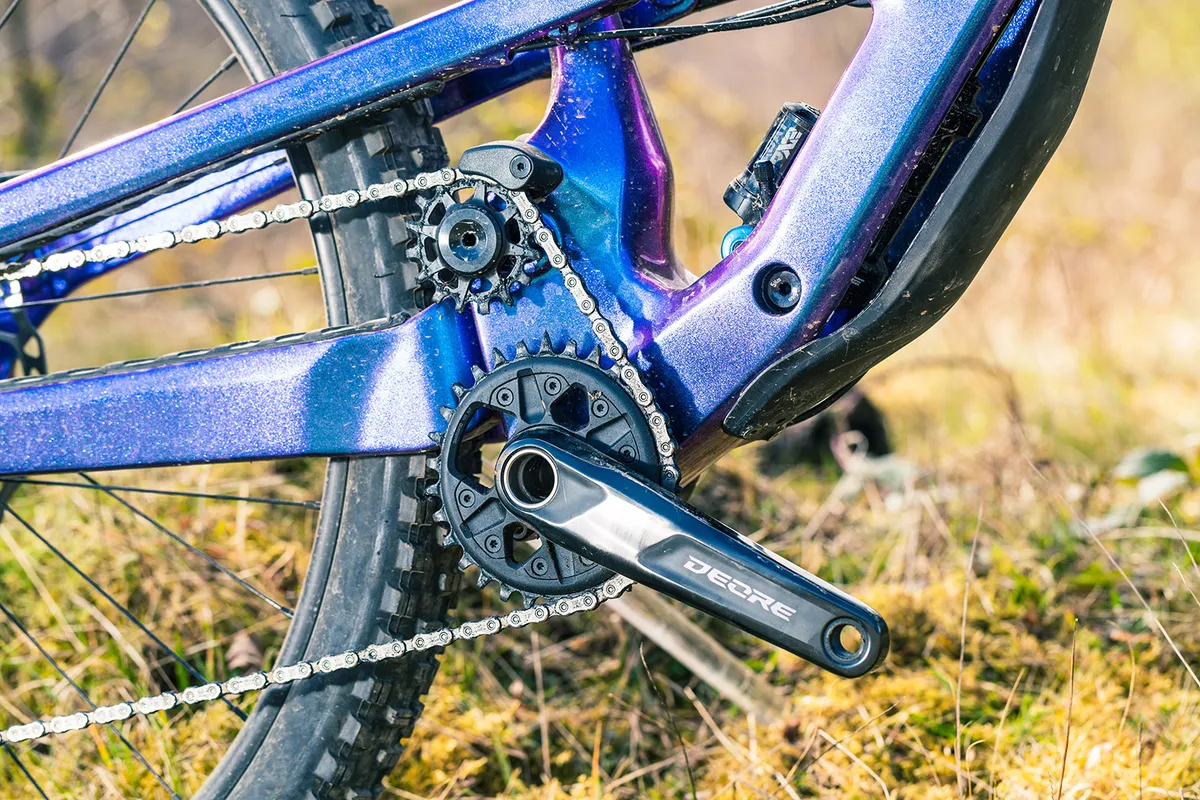
The drivetrain is typically noisier than a conventional drivetrain system because of the idler wheel, and it can sometimes create further friction, given the greater complexity of more moving parts.
However, it’s important to note this isn't always the case. It's dependent on how well the brand has utilised the design and how well maintained it is.
Finally, you’re likely to pay a slight penalty in weight with a high-pivot system, due to the longer chain, idler pulley and any additional bearings or guides. That said, given the types of mountain bike this system is generally found on, weight isn’t the target focus.
Should you buy a high-pivot mountain bike?
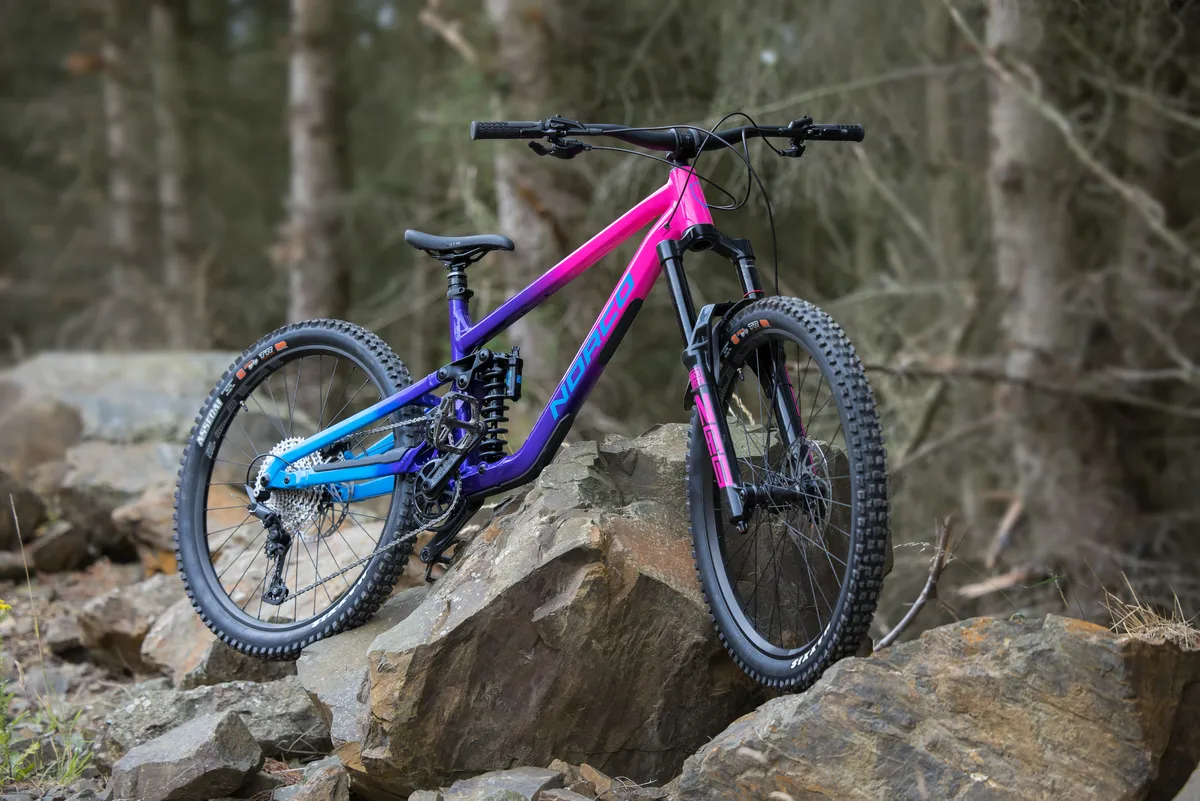
As ever, it depends.
When you're deciding on the best mountain bike to buy, you ultimately need to weigh up whether a high-pivot design is best suited to your preferred riding style and what you’re looking to achieve from the bike.
As with any prospective bike purchase, it's well worth test riding your shortlisted bike to see if it works for you.
If you want a smooth-riding bike that can plough through technical trails with greater poise, a high-pivot design could be an enticing proposition.
Conversely, for riders who like to pick their way down a trail, and who are after a more uncensored and visceral experience, the nature of a high-pivot suspension layout dumbs this down somewhat.

Arguably, a high-pivot system is best suited to enduro and downhill bikes, where the more rearward axle path translates into a perceivably faster, aggressive and assured feel on the descents.
For cross-country bikes and trail bikes, where there are lower weights and a greater focus on climbing and pedalling efficiency, low pivot continues to reign supreme.
High pivot has made a comeback for a reason, though, and we expect brands to continue to adopt the design.
Indeed, while high-pivot mountain bikes didn’t quite catch on first time around, advances in drivetrain, suspension and frame technology mean mitigating the design’s drawbacks is easier than ever.
The best high-pivot mountain bikes, as tested by BikeRadar
Here are three of the best high-pivot mountain bikes we've reviewed on BikeRadar.
Norco Shore 2

- £3,399 / $5,199 as tested
The Norco Shore 2 shows how good the latest high-pivot bikes can be. It's one of the most confidence-inspiring long-travel bikes on the market today, at a price that's hard to beat.
The suspension (180mm of rear-wheel travel) is supple and smooth, giving speed on tap on rough terrain, and the geometry is ideal for the bike's big-mountain intentions.
Devinci Spartan HP GX
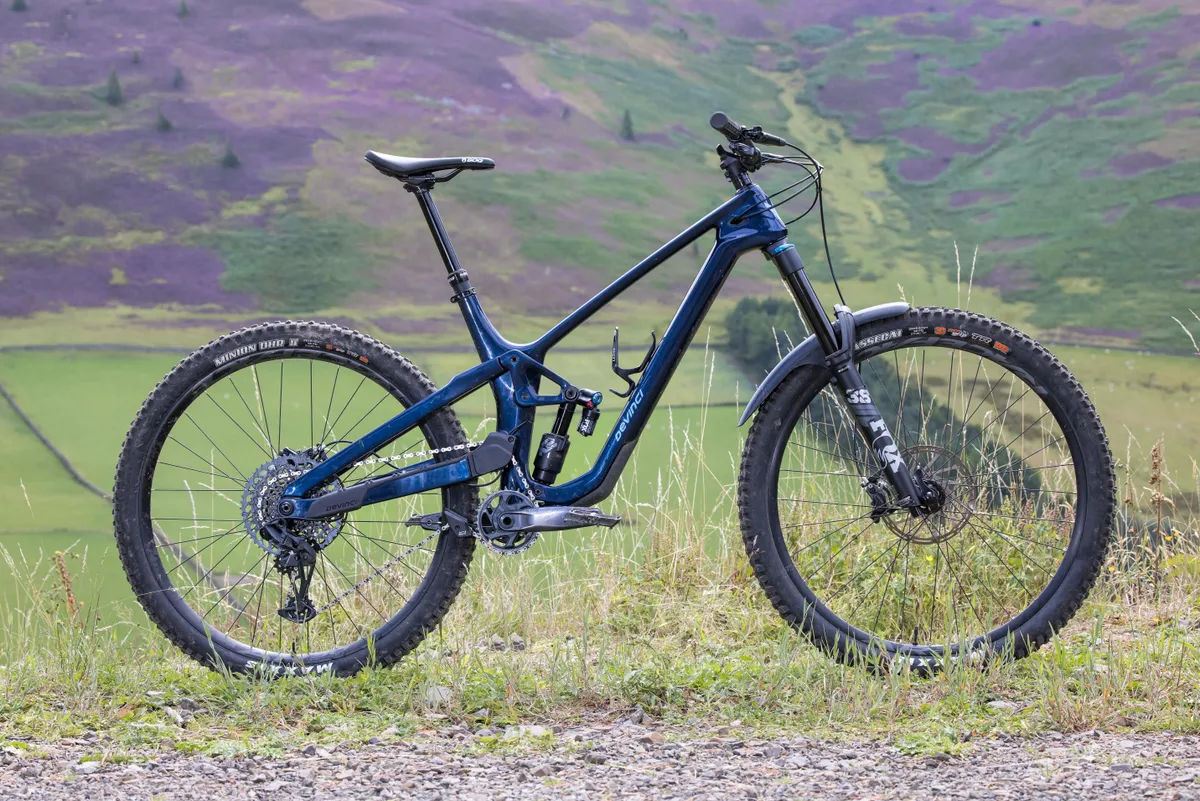
- Not available in UK / $6,149 / €6,249 as tested
The Spartan HP is a bump-munching, race-ready enduro machine and the entry model we tested has a solid spec for the price. The suspension platform is impressively supple, with a 170mm fork at the front and 160mm at the back.
For a high-pivot bike, we found it to be sure-footed on tight and twisty trails, and it’s at home when ridden aggressively with intent.
Cannondale Jekyll 1
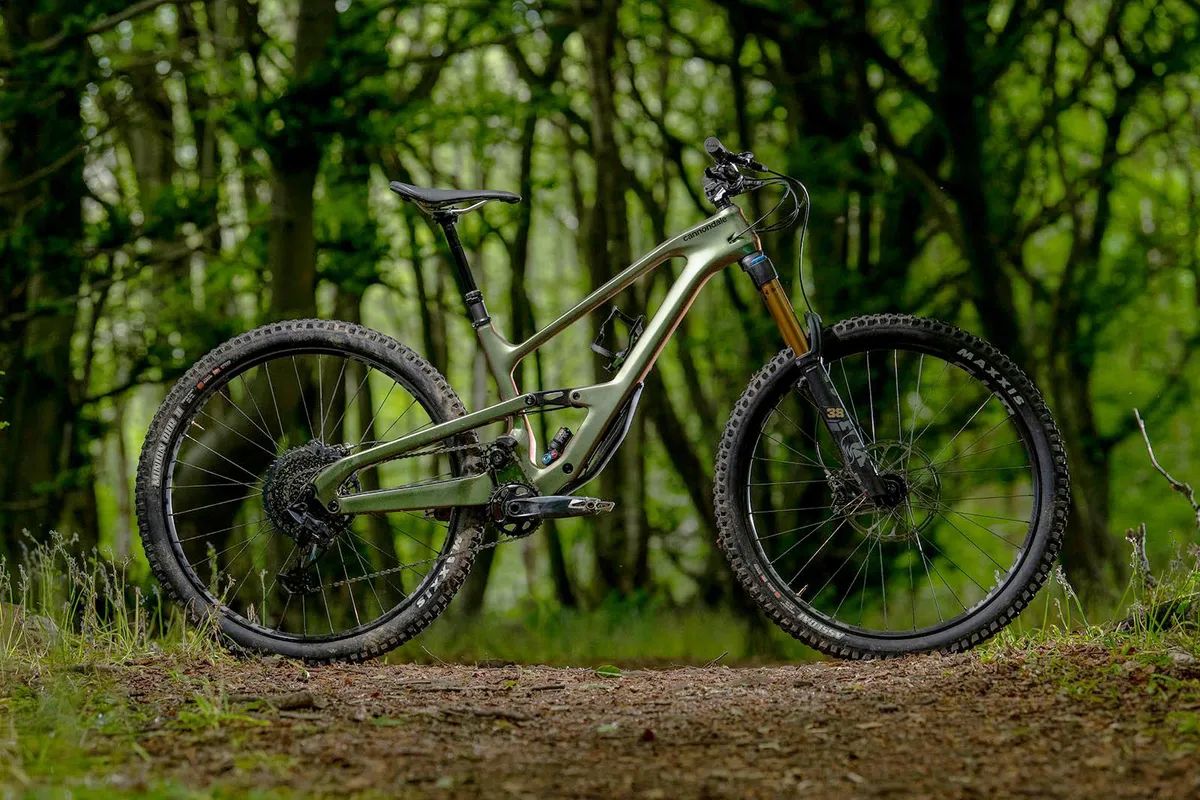
- £6,500 / $6,100 / €6,499 / AU$8,500 as tested
We found a lot to commend in Cannondale’s latest Jekyll enduro bike.
As is typical for the brand, it hasn’t stuck to convention, with the rear-suspension placement in the down tube – a design the brand dubs the ‘Gravity Cavity’.
It has great geometry and feels super-stable and composed on the trail, although we’d like to see a wheel upgrade from the stock WTB rims on the bike tested.
Hope HB.916
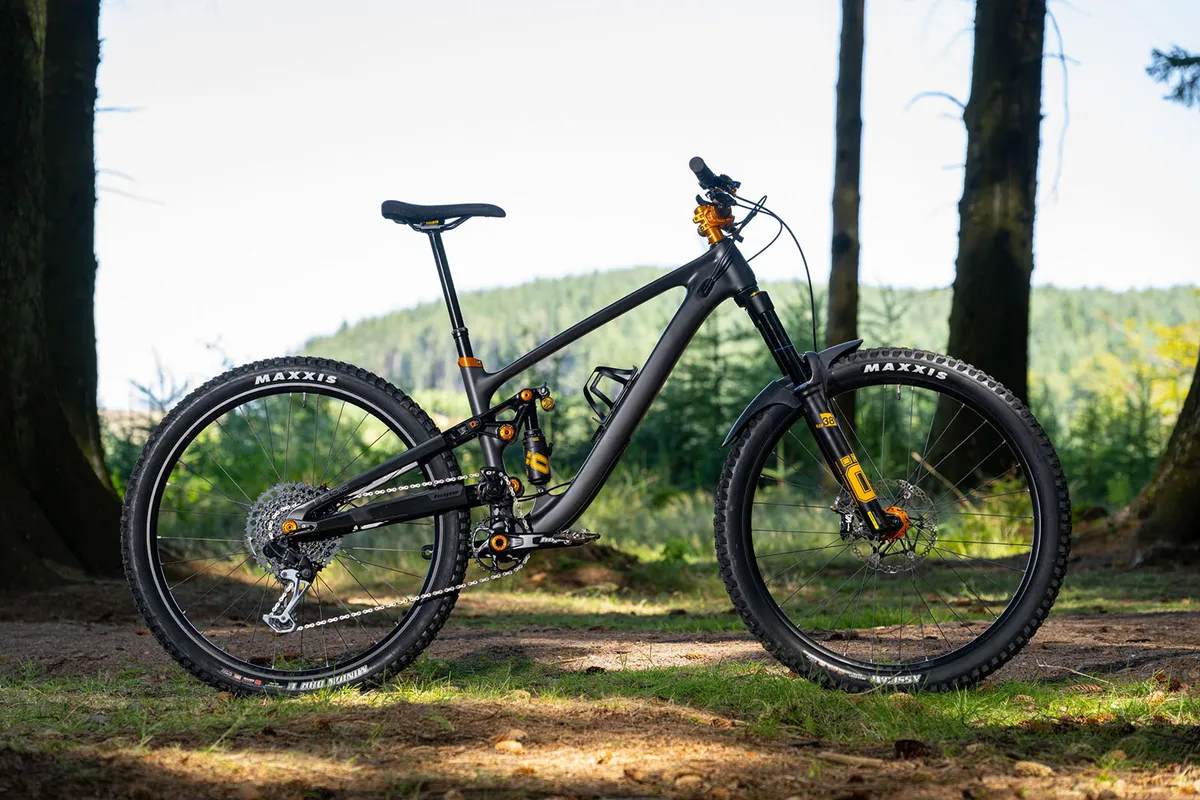
Hope's HB.916 is the British brand's first foray into high-pivot linkages and features 160mm of rear-suspension travel.
Although the Öhlins R38 M2 fork and TTX2 air shock were initially tricky to setup, once dialled we found the bike to be well-balanced and more than capable on even the gnarliest of terrain.
We found the in house spec which features Hope wheels, brakes and drivetrain components to compliment the frame. Though our tester found the carbon bar to be a little too stiff.
Also consider...
We've also tested the bikes below as un-scored first-ride reviews.
Forbidden Dreadnought XT
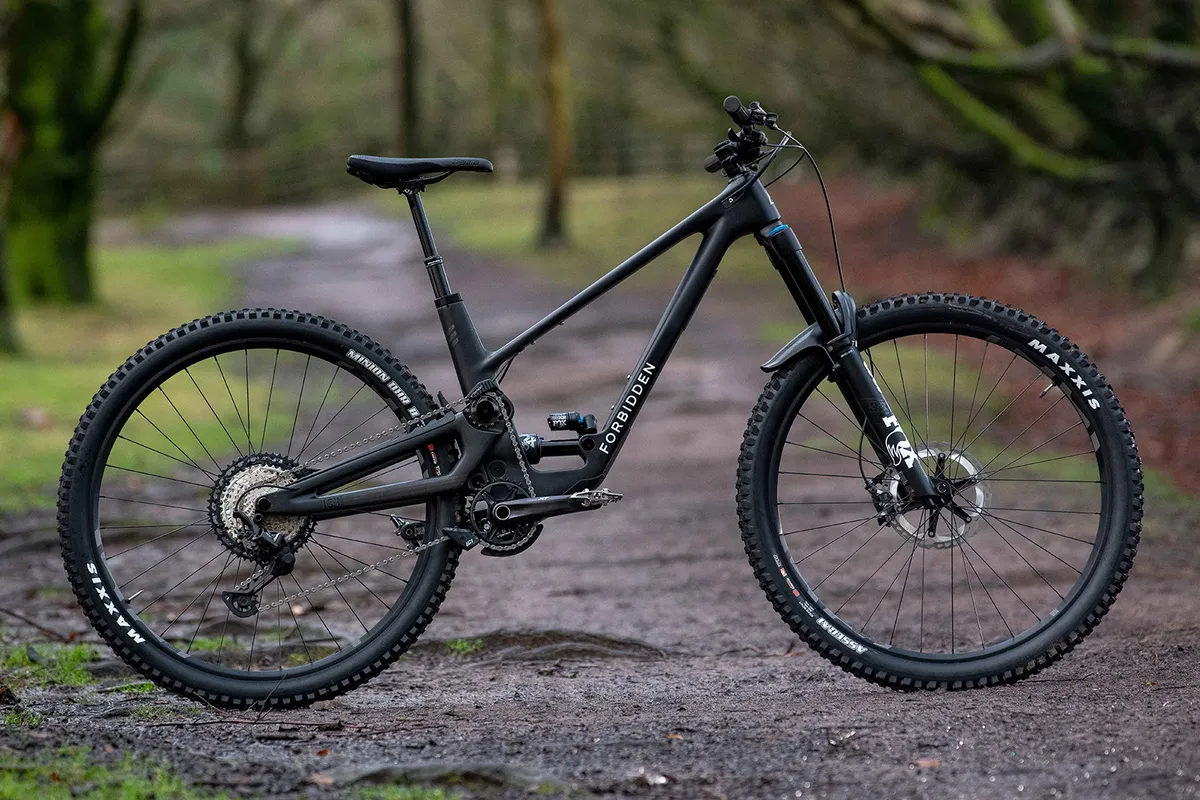
- £5,999 / $6,499 / €6,899 as tested
The Forbidden Dreadnought provides an impressively stable pedalling platform and its suspension has enough progression for the bigger hits.
However, our first-ride impressions suggest you need to have a pretty active technique to unlock the full potential of the Dreadnought. It’s more of a lively and playful, rather than plush, ride on the descents.
Forbidden Druid
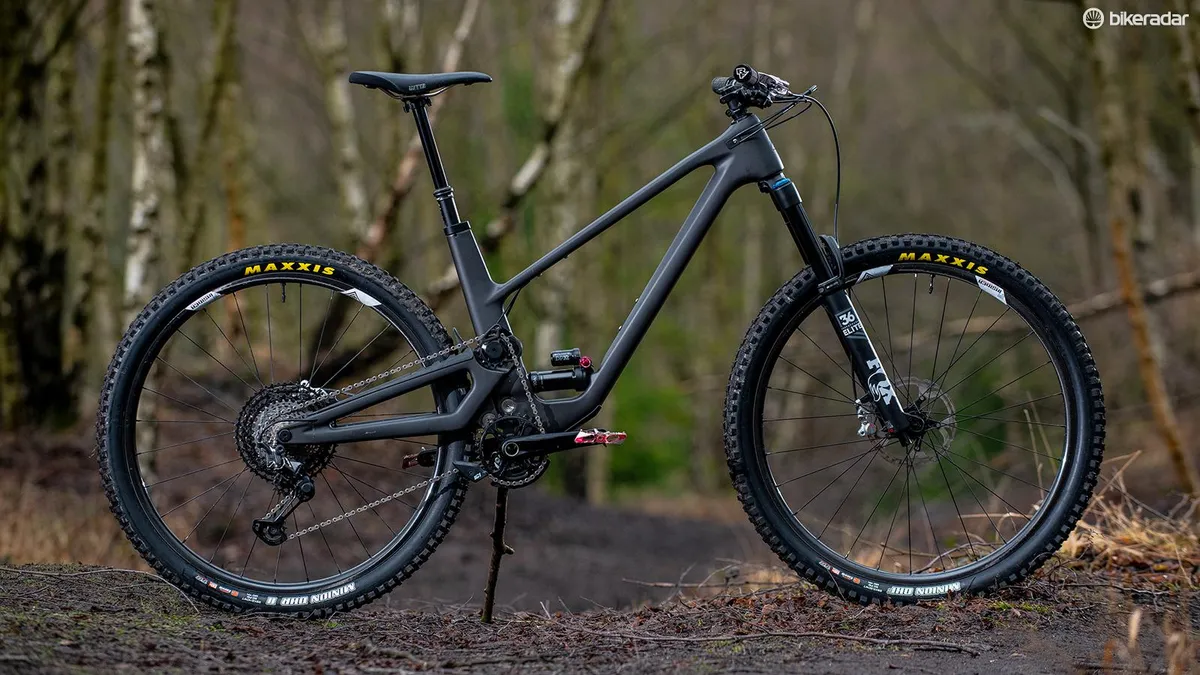
- £3,150 / $2,999 (for frame, shock and cable guides only) as tested
The Forbidden Druid was among the bikes to bring high-pivot suspension to a shorter-travel design (130mm of rear travel, to be precise)
It pedals efficiently, absorbs bumps with ease and really comes to life on descents, where the Druid rides assuredly for a short-travel bike and offers excellent grip in corners.
